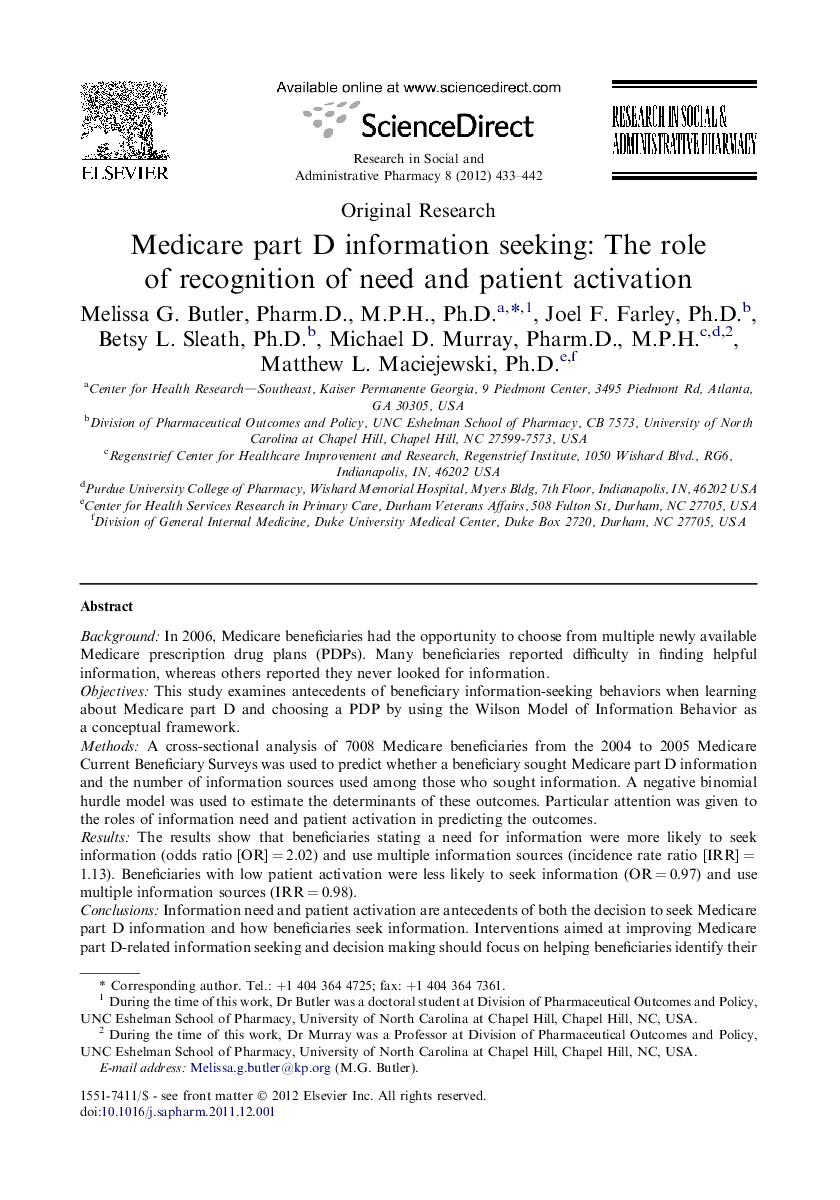| Article ID | Journal | Published Year | Pages | File Type |
|---|---|---|---|---|
| 2508895 | Research in Social and Administrative Pharmacy | 2012 | 10 Pages |
BackgroundIn 2006, Medicare beneficiaries had the opportunity to choose from multiple newly available Medicare prescription drug plans (PDPs). Many beneficiaries reported difficulty in finding helpful information, whereas others reported they never looked for information.ObjectivesThis study examines antecedents of beneficiary information-seeking behaviors when learning about Medicare part D and choosing a PDP by using the Wilson Model of Information Behavior as a conceptual framework.MethodsA cross-sectional analysis of 7008 Medicare beneficiaries from the 2004 to 2005 Medicare Current Beneficiary Surveys was used to predict whether a beneficiary sought Medicare part D information and the number of information sources used among those who sought information. A negative binomial hurdle model was used to estimate the determinants of these outcomes. Particular attention was given to the roles of information need and patient activation in predicting the outcomes.ResultsThe results show that beneficiaries stating a need for information were more likely to seek information (odds ratio [OR] = 2.02) and use multiple information sources (incidence rate ratio [IRR] = 1.13). Beneficiaries with low patient activation were less likely to seek information (OR = 0.97) and use multiple information sources (IRR = 0.98).ConclusionsInformation need and patient activation are antecedents of both the decision to seek Medicare part D information and how beneficiaries seek information. Interventions aimed at improving Medicare part D-related information seeking and decision making should focus on helping beneficiaries identify their need for information accurately and increasing their level of activation.
